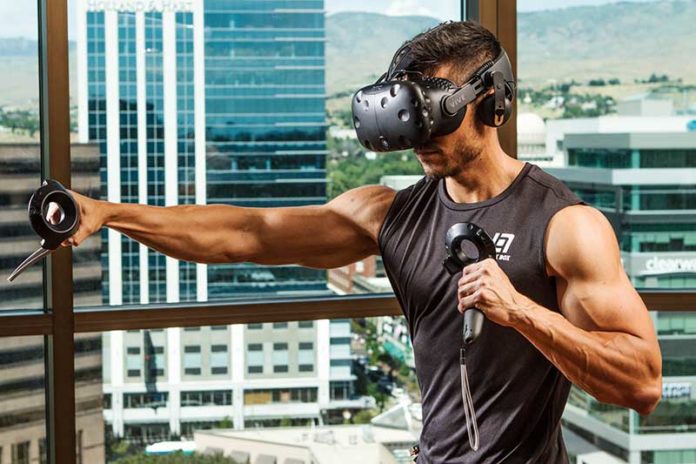VR is a great way to get people who don’t like the idea of exercise to achieve fitness gains, but what about the rest of us? I love running, biking, and swimming. For me, one of the principal benefits of VR fitness was to get me conditioned to do those activities after a 10-month layoff period, but without having to cut my teeth all over again by being an out of shape runner/cycler/swimmer. Now that I can do those activities again with relative ease, I do, but VR still holds a valued place in my regimen.
Here are some ways that I’ve found to incorporate VR fitness into my existing training schedule.
Use VR as a Fallback
When I run or bike, I do it outdoors. Running on a treadmill or biking on a recumbent just doesn’t capture the same enjoyment for me that hitting the trails do. Of course, the weather doesn’t always cooperate, and with Winter fast approaching my days of outdoor training are dwindling. When rainy days or poor weather conditions keep me indoors, VR fitness is the best way to still have fun while keeping my conditioning intact without feeling like I’m settling for an unworthy substitute.
Have a Dedicated VR Exercise Day
Currently, I do strength training two days per week, and I try to run, bike and swim another three days. One day is for VR (until the weather turns). I treat VR as just another sport that I train for, and I give it the same priority as my other sports. Whereas in running, biking, and swimming my metrics for improvement are longer distances or better times, VR has its own unique criteria for advancement. In The Thrill of the Fight it’s getting more knockouts, in Holopoint, it’s graduating to a higher wave, and in Hot Squat it’s rising in the ranks of the leaderboards. Every good VR fitness game has something that I can improve at, and I make it a goal to get a little better every week.
Do Just 20 Minutes
When I’m squeezed for time, doing just 20 minutes of running or biking isn’t very satisfying to me. Sure, I could do 20 minutes of HIIT and get a great workout in, but I absolutely hate HIIT. If I have only 20 minutes to swim, forget about it. Half that time gets spent arriving at the gym and changing in the locker room anyway. On the contrary, 20 minutes is plenty of time to get in a great VR workout. In fact, games like Soundboxing or Bitslap can feel a lot like doing HIIT sprints, except I actually have fun.
Use VR as an Active Recovery Workout
The benefits of active recovery workouts are well established, but it’s not exactly something many of us look forward to doing. If you’re anything like me, you probably just skip active recovery days altogether. VR provides a litany of awesome lower intensity experiences like Fruit Ninja, Holoball, Superhot, Drunkn Bar Fight, and the list just goes on and on. Trust me, used like this, you’ll never dread doing active recovery again.
Stave Off Overuse Injuries
One of the reasons I try and do a variety of different fitness activities is so I don’t get overuse injuries, which I am very prone to. Golfer’s elbow, jumper’s knee, IT band syndrome; I’ve had them all. If you’re the type of person who only runs or only bikes or only plays one sport, you put yourself at risk of developing an overuse injury by performing the same repetitive movements over and over again. There’s nothing worse than being forced to take a prolonged layoff to recover when rest is the only viable solution to your predicament. VR fitness offers a great opportunity to vary your movement patterns and give your connective tissue some relief. Take a day off your sport to do some VR fitness instead. It will do wonders.
Let me be the first to tell you that VR Fitness isn’t only for people who don’t have a dedicated fitness habit. For fitness enthusiasts, it can be combined with an existing routine as a supplement or a substitute to great effect.
How have you integrated VR fitness into your fitness lifestyle? Does it make you a better athlete? Let us know in the comments below!


